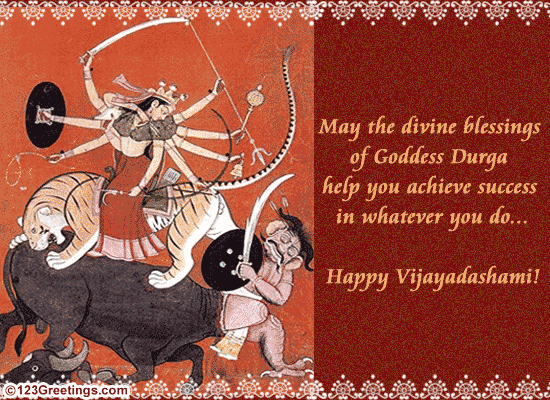
| < id=notes_text_>< = value=09c7cd4d3392cccdaa5ce17bd14e4433 name=magic_>< id=notes_text_area ="_limit_, 300; _ge'photo_notes'.check_note_for_prop" ="place_notes_text_div; adjust__height; _limit_, 300; _ge'photo_notes'.check_note_for_prop" rows=1 wrap=virtual> | |

Vijayadashami (Kannada: ????????, Telugu: ???????? Hindi: ????????, Marathi: ?????????), also known as Dussehra (Kannada: ???, Telugu: ????, Hindi: ?????, Urdu: ?????, Marathi: ????) and Dashain (in Nepali), is a festival celebrated in varying forms across Nepal and India. It is celebrated on the tenth day of the bright fortnight (Shukla Paksha) of the Hindu autumn month of Ashvin or Ashwayuja, and is the grand culmination of the 10-day annual Navratri (Sanskrit: ????????, nine nights) festival.

In Southern India, Eastern India and Western India, the festival of Navaratri which culminates with Vijayadashami commemorates the legend in which the Goddess Durga, also known as Chamundeshwari or Mahishasura Mardini, vanquishes the demon Mahishasura, an event that is said to have taken place in the vicinity of the present day city of Mysore in Karnataka.
All the People in Nepal, as well as the contiguous Indian hill state of Uttarakhand, celebrate the festival with the greatest importance.

In Northern India, the festival commemorates the victory of Rama, prince of Ayodhya and avatara of Vishnu, over Ravana, the ruler of Lanka who had abducted Rama's wife, Sita Devi. The festival is celebrated with much gusto. Crackers are burnt, and huge melas or fetes are organised. The Ramlila - an abridged dramatization of the Ramayana - is enacted with much public fervour all over northern India during the period of the festivities. The burning of the effigies of Ravana on Vijayadashami, signifying the victory of good over evil, brings the festivities to a colourful close. Some non-Hindus also go to the festival for the novelty of the costumes and reenactments.
In Kashmir, Himachal Pradesh, Western Uttar Pradesh and Uttarakhand, it is traditional to plant barley seeds in earthern pots on the first day of Navratri. On the day of Dussehra, the nine-day old sprouts (called noratras or nortas) are used as symbols of luck. Men place them in their caps or behind their ears.

Friends let the goodness within you win over the evil. Celebrate this festival eating hot hot fafda and Jalebi. ( mooh me pani aa gaya). running to get some.😆😆
Be safe during the festivity.









































